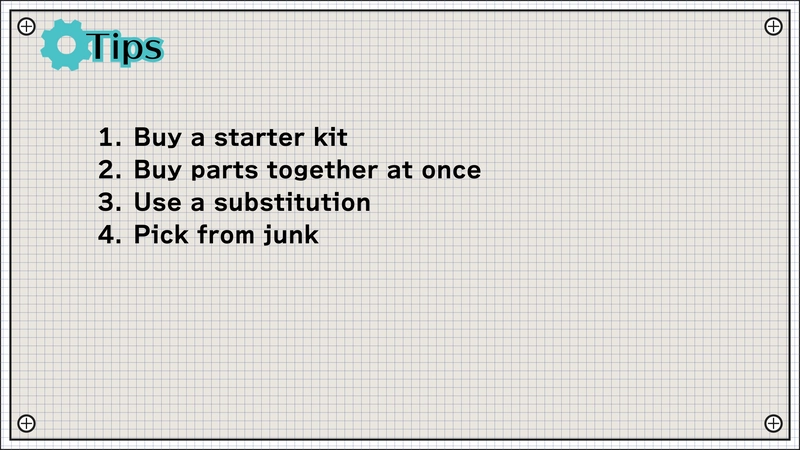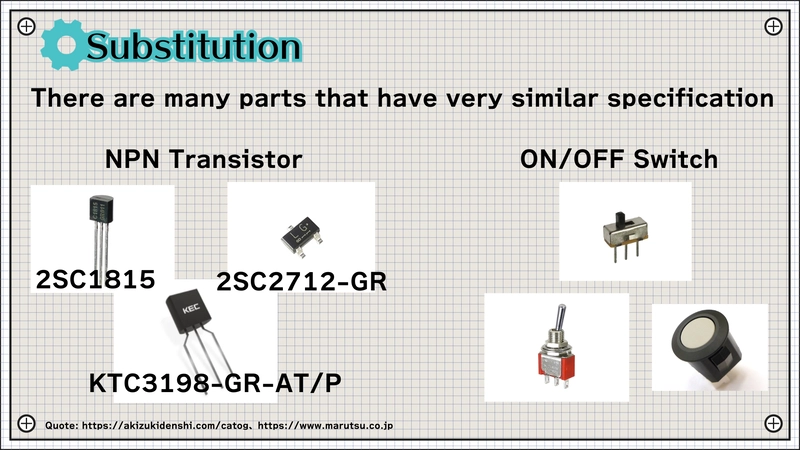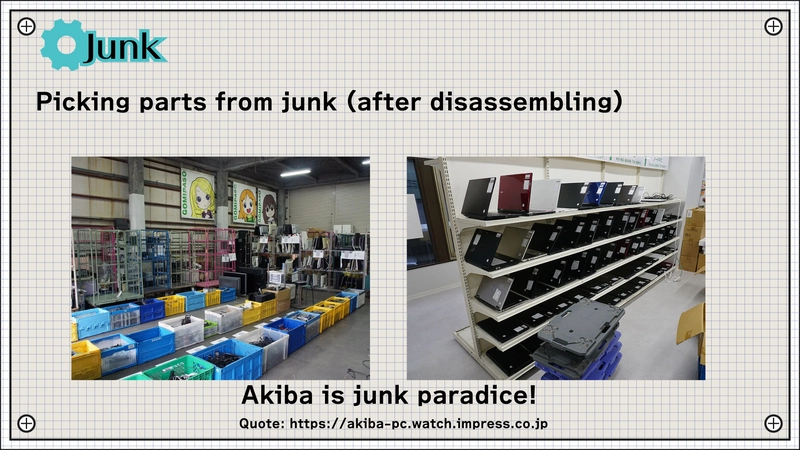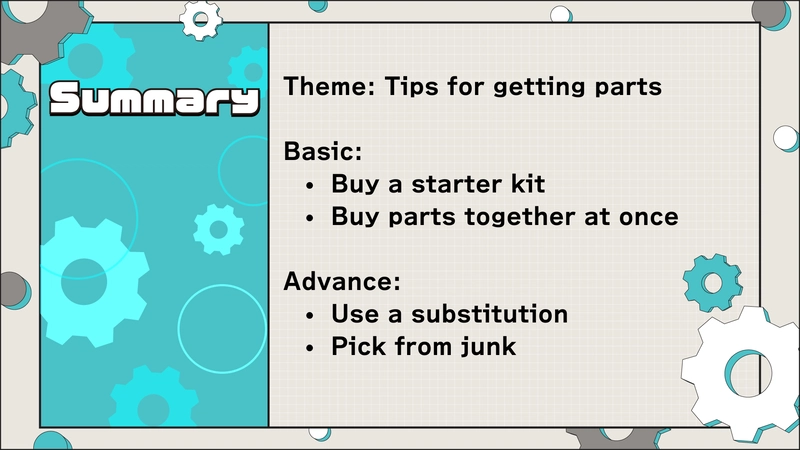Smart Tips for Sourcing Your Electronic Components
Hello, this is Buono! Following up on our last discussion about buying electronic parts online and offline, today I want to share some tips for getting those components more reasonably, maybe even cheaper. Getting the right parts without overspending is key for any electronics project. I'll cover four main tips today, broken down into basic strategies for everyone and a couple of advanced techniques for those willing to dig a bit deeper. Basic Tips 1. Start with a Starter Kit If you're new to electronics or a specific platform like Arduino, starter kits are fantastic. You can find many options online, for example, on Amazon. I particularly like some of the Arduino starter kits available there because they bundle together a wide variety of essential items – microcontrollers, sensors, output devices like motors, wires, breadboards, and more. Often, you can get a comprehensive kit for under $40 USD. This is an excellent way to get started if you're unsure exactly which individual components you'll need, as it allows you to experiment with inputs, processing, and outputs right out of the box. The value is great, and user reviews are generally decent. 2. Buy Parts Together to Save on Shipping One unavoidable cost with many online electronic shops (like Digi-Key, Adafruit, etc., unless you have something like Amazon Prime) is the shipping fee, which can often be around $10 or more. To minimize this impact, plan your projects and try to buy all the components you need in a single order. Many stores offer free shipping if your order total exceeds a certain amount (maybe $40 or $50, the exact threshold varies). Even if you don't reach the free shipping limit, consolidating your purchases means the shipping cost per part becomes much lower compared to placing many small orders. So, think ahead and buy in bulk when possible! Advanced Tips 3. Learn to Substitute Components Sometimes, the exact part number you need might be out of stock or unavailable. Don't worry! Many electronic components have very similar substitutes. For instance, if you need a common NPN transistor like the 2SC1815 but can't find it, parts like the 2SC945 or KTC3198 often have nearly identical specifications and can work as replacements. You'll need to check the datasheets to confirm key parameters, but slight differences are often acceptable for hobbyist projects. Be mindful, though: Shape Matters: Substitutes might come in different packages (e.g., through-hole vs. SMD). An SMD component might have much lower power handling than its through-hole counterpart, even if the core function is similar. Physical Fit: A switch substitute might function identically but have a different footprint or mounting style, requiring you to adapt your connections, perhaps using wires and soldering instead of direct PCB mounting. Always compare datasheets! 4. Salvage Parts from Junk Electronics For the truly adventurous, scavenging parts from old or broken electronics ("junk") can be a goldmine. You can often acquire non-functional printers, computers, stereos, etc., very cheaply or even for free. By carefully disassembling them, you can harvest a surprising variety of useful components: resistors, capacitors, connectors, switches, motors, and sometimes even specialized ICs. I live near Akihabara in Japan, which is like a paradise for this, with many shops selling junk products. Of course, this requires disassembly skills and the tools to safely take things apart and desolder components. But if you're lucky and persistent, you can build up a great collection of parts for next to nothing. Summary So, to recap the tips for getting parts effectively: Basic: Consider a starter kit, and always try to buy components together in one order. Advanced: Learn to find suitable substitutions, and don't be afraid to salvage parts from junk electronics if you have the skills. That's all for today. Happy building!

Hello, this is Buono! Following up on our last discussion about buying electronic parts online and offline, today I want to share some tips for getting those components more reasonably, maybe even cheaper. Getting the right parts without overspending is key for any electronics project.
I'll cover four main tips today, broken down into basic strategies for everyone and a couple of advanced techniques for those willing to dig a bit deeper.
Basic Tips
1. Start with a Starter Kit
If you're new to electronics or a specific platform like Arduino, starter kits are fantastic. You can find many options online, for example, on Amazon. I particularly like some of the Arduino starter kits available there because they bundle together a wide variety of essential items – microcontrollers, sensors, output devices like motors, wires, breadboards, and more.
Often, you can get a comprehensive kit for under $40 USD. This is an excellent way to get started if you're unsure exactly which individual components you'll need, as it allows you to experiment with inputs, processing, and outputs right out of the box. The value is great, and user reviews are generally decent.
2. Buy Parts Together to Save on Shipping
One unavoidable cost with many online electronic shops (like Digi-Key, Adafruit, etc., unless you have something like Amazon Prime) is the shipping fee, which can often be around $10 or more.
To minimize this impact, plan your projects and try to buy all the components you need in a single order. Many stores offer free shipping if your order total exceeds a certain amount (maybe $40 or $50, the exact threshold varies). Even if you don't reach the free shipping limit, consolidating your purchases means the shipping cost per part becomes much lower compared to placing many small orders. So, think ahead and buy in bulk when possible!
Advanced Tips
3. Learn to Substitute Components
Sometimes, the exact part number you need might be out of stock or unavailable. Don't worry! Many electronic components have very similar substitutes.
For instance, if you need a common NPN transistor like the 2SC1815 but can't find it, parts like the 2SC945 or KTC3198 often have nearly identical specifications and can work as replacements. You'll need to check the datasheets to confirm key parameters, but slight differences are often acceptable for hobbyist projects.
Be mindful, though:
- Shape Matters: Substitutes might come in different packages (e.g., through-hole vs. SMD). An SMD component might have much lower power handling than its through-hole counterpart, even if the core function is similar.
- Physical Fit: A switch substitute might function identically but have a different footprint or mounting style, requiring you to adapt your connections, perhaps using wires and soldering instead of direct PCB mounting. Always compare datasheets!
4. Salvage Parts from Junk Electronics
For the truly adventurous, scavenging parts from old or broken electronics ("junk") can be a goldmine. You can often acquire non-functional printers, computers, stereos, etc., very cheaply or even for free.
By carefully disassembling them, you can harvest a surprising variety of useful components: resistors, capacitors, connectors, switches, motors, and sometimes even specialized ICs. I live near Akihabara in Japan, which is like a paradise for this, with many shops selling junk products.
Of course, this requires disassembly skills and the tools to safely take things apart and desolder components. But if you're lucky and persistent, you can build up a great collection of parts for next to nothing.
Summary
So, to recap the tips for getting parts effectively:
- Basic: Consider a starter kit, and always try to buy components together in one order.
- Advanced: Learn to find suitable substitutions, and don't be afraid to salvage parts from junk electronics if you have the skills.
That's all for today. Happy building!




























![[Webinar] AI Is Already Inside Your SaaS Stack — Learn How to Prevent the Next Silent Breach](https://blogger.googleusercontent.com/img/b/R29vZ2xl/AVvXsEiOWn65wd33dg2uO99NrtKbpYLfcepwOLidQDMls0HXKlA91k6HURluRA4WXgJRAZldEe1VReMQZyyYt1PgnoAn5JPpILsWlXIzmrBSs_TBoyPwO7hZrWouBg2-O3mdeoeSGY-l9_bsZB7vbpKjTSvG93zNytjxgTaMPqo9iq9Z5pGa05CJOs9uXpwHFT4/s1600/ai-cyber.jpg?#)














































































































































![[The AI Show Episode 144]: ChatGPT’s New Memory, Shopify CEO’s Leaked “AI First” Memo, Google Cloud Next Releases, o3 and o4-mini Coming Soon & Llama 4’s Rocky Launch](https://www.marketingaiinstitute.com/hubfs/ep%20144%20cover.png)




































































































































































































![Rogue Company Elite tier list of best characters [April 2025]](https://media.pocketgamer.com/artwork/na-33136-1657102075/rogue-company-ios-android-tier-cover.jpg?#)








































































_Andreas_Prott_Alamy.jpg?width=1280&auto=webp&quality=80&disable=upscale#)



























































































![What’s new in Android’s April 2025 Google System Updates [U: 4/18]](https://i0.wp.com/9to5google.com/wp-content/uploads/sites/4/2025/01/google-play-services-3.jpg?resize=1200%2C628&quality=82&strip=all&ssl=1)










![Apple Watch Series 10 Back On Sale for $299! [Lowest Price Ever]](https://www.iclarified.com/images/news/96657/96657/96657-640.jpg)
![EU Postpones Apple App Store Fines Amid Tariff Negotiations [Report]](https://www.iclarified.com/images/news/97068/97068/97068-640.jpg)
![Apple Slips to Fifth in China's Smartphone Market with 9% Decline [Report]](https://www.iclarified.com/images/news/97065/97065/97065-640.jpg)








































































































































